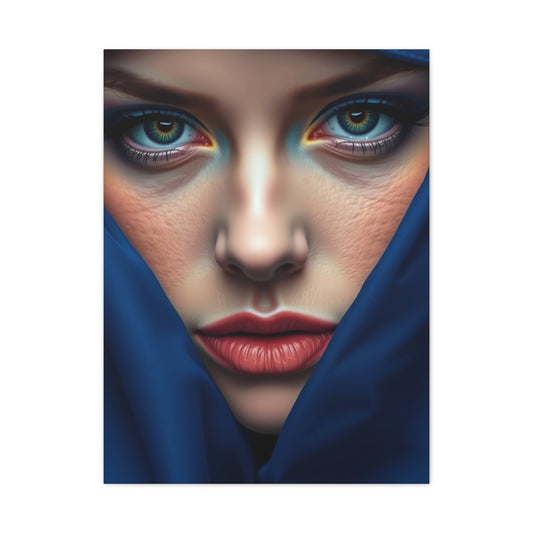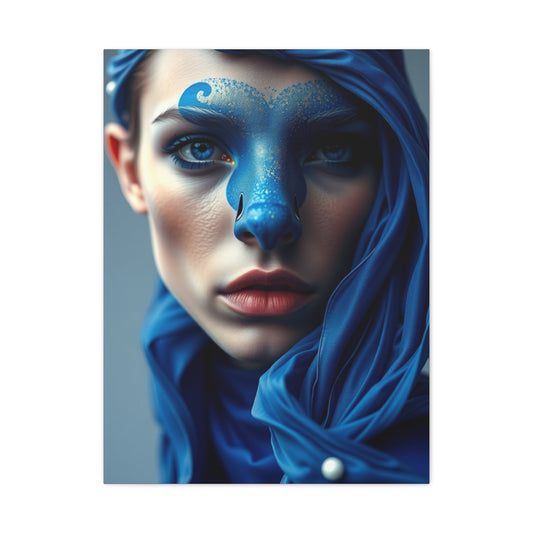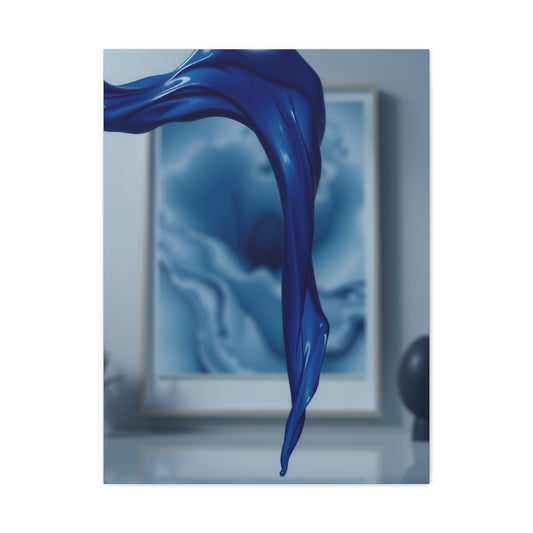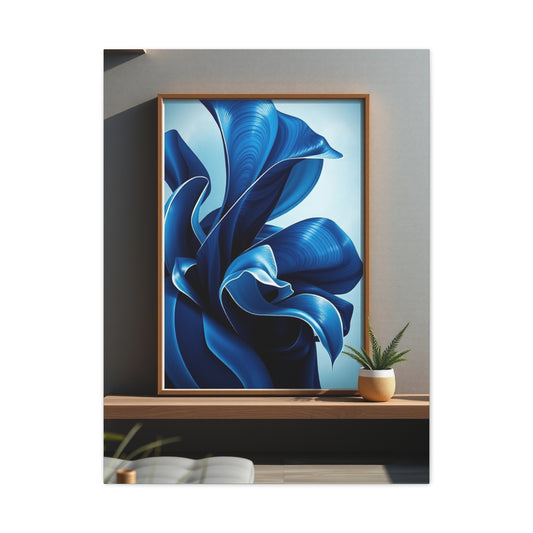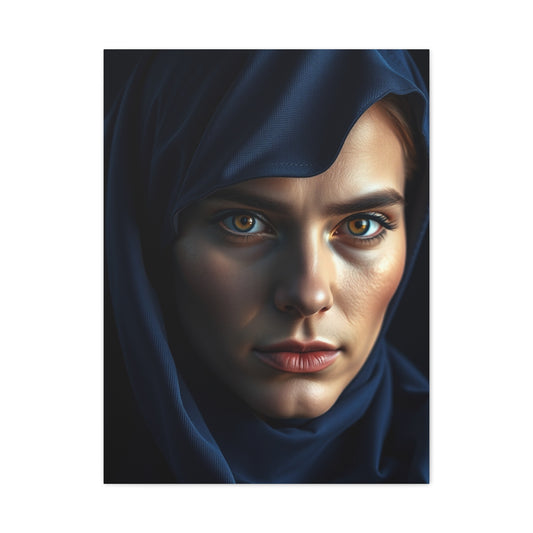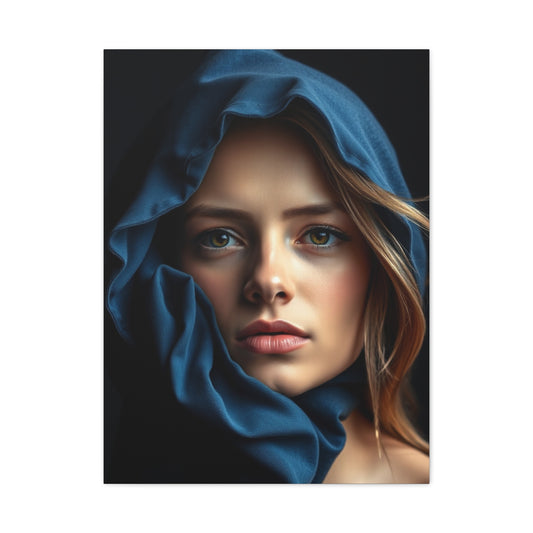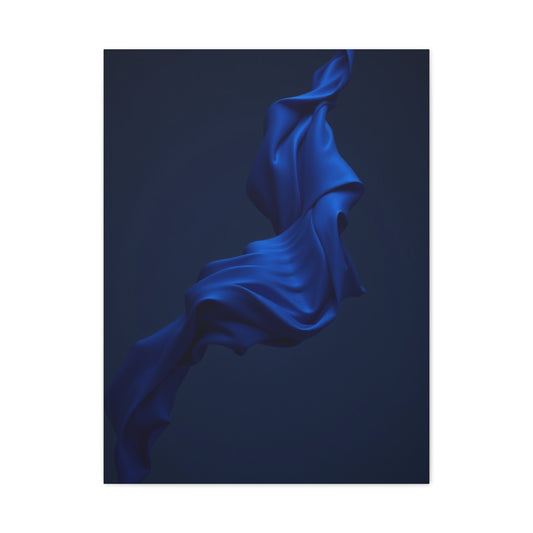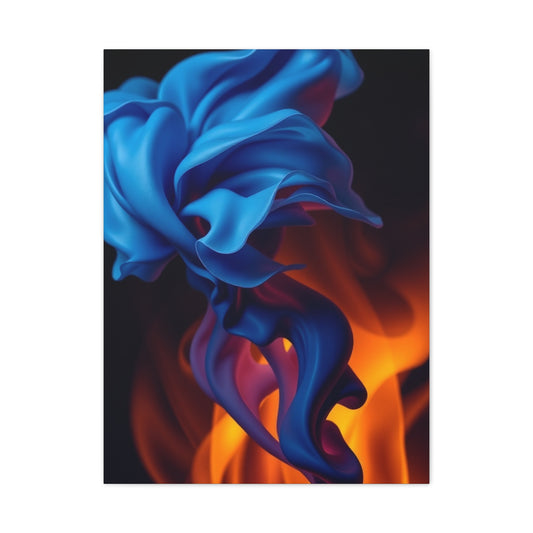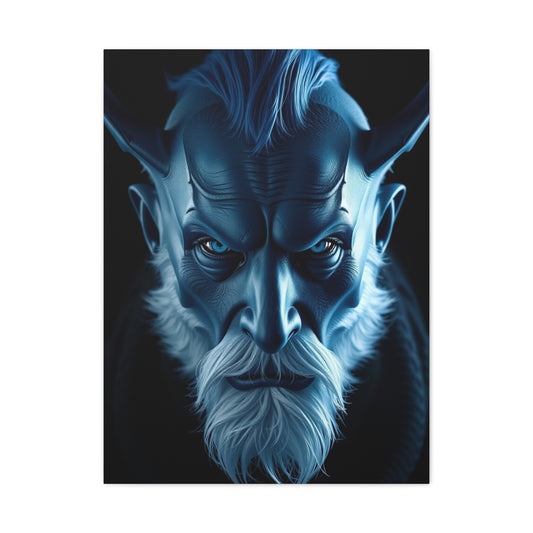Navy Blue Wall Art Ideas That Instantly Relax Your Mind
Creating a tranquil retreat within the home involves more than simply selecting a plush mattress or luxurious linens. The ambiance of a bedroom, or any personal space, can profoundly influence our sense of calm and relaxation. While many elements contribute to serenity, color has emerged as a surprisingly potent factor. Among the spectrum of hues, navy blue stands out as a particularly soothing choice, with research suggesting that it evokes feelings of relaxation more than any other color. Integrating this deep, contemplative shade into wall art, textiles, and décor can transform ordinary rooms into restorative sanctuaries.
Recent studies have explored how different colors affect mood, revealing the psychological resonance of various shades. Navy blue, with its deep, contemplative undertones, has consistently been associated with calmness and tranquility, making it an ideal choice for bedrooms, living areas, or even creative spaces. Beyond its psychological effects, the rich depth of navy blue also lends itself beautifully to wall art, allowing for subtle yet compelling visual narratives that reinforce a space’s calming atmosphere.
Historical Background
The use of blue in interior design is far from a modern trend. Throughout history, shades of blue have been prized for their association with stability, introspection, and elegance. Ancient civilizations valued lapis lazuli, a mineral pigment, for its vibrant blue hue, using it in art and sacred spaces to convey both wealth and spiritual depth. During the Renaissance, ultramarine, derived from lapis lazuli, became a favorite among painters seeking a striking yet meditative palette for religious and mythological scenes. Later, Prussian blue emerged in European interiors as a versatile shade for walls, fabrics, and decorative objects, prized for its ability to create a serene, contemplative environment.
As domestic interiors evolved, navy blue became synonymous with sophistication and comfort. In the 19th and 20th centuries, it appeared frequently in bedrooms, libraries, and studies, where it conveyed both elegance and a retreat-like ambiance. Today, its continued popularity reflects a blend of historical significance and scientific validation, with modern research affirming the calming properties long recognized by designers and homeowners alike.
Core Concepts and Foundations
At the heart of navy blue’s allure lies its ability to harmonize the mind and senses. Unlike brighter or more saturated tones, which can evoke excitement or stimulation, deep shades like navy are intrinsically associated with tranquility. Scientific studies investigating the emotional responses to color have repeatedly found that descriptors such as “relaxing,” “soothing,” and “peaceful” are most frequently applied to navy blue. This is not coincidental; colors that mimic elements of nature, particularly water and sky, resonate with humans on a primal level, signaling safety, continuity, and serenity.
Incorporating navy blue into wall art is one of the most effective ways to leverage these psychological effects. From abstract compositions to figurative representations, navy blue wall art provides a visual anchor that can calm the mind, subtly regulating mood while enhancing the aesthetic coherence of a space. This principle extends to complementary shades, such as muted greens or soft neutrals, which can amplify navy blue’s tranquil influence without overwhelming the senses.
Types and Categories
Navy blue, though often perceived as a single color, encompasses a spectrum of variations that suit different moods and spaces. Slightly lighter shades, like cobalt or indigo, retain the relaxing qualities of navy while introducing a sense of openness and airiness. Darker variants offer a cocoon-like effect, enveloping rooms in a sense of security and intimacy.
When applied to wall art, navy blue can take many forms. Large-scale abstract canvases in deep blue create a dramatic yet soothing focal point, while smaller prints or minimalist geometric compositions provide subtle visual interest without dominating the room. Mixed-media pieces that integrate navy with textures such as velvet, metallic accents, or layered paints can further enhance the sense of depth and relaxation, offering tactile as well as visual engagement. Even functional decorative elements, such as navy-toned wall panels or framed prints, contribute to a cohesive atmosphere that prioritizes calm.
Practical Applications
Implementing navy blue into everyday living spaces can be approached in a variety of ways. In bedrooms, painting walls in a deep navy hue can set a restful tone, particularly when paired with nature-inspired accents such as leafy green textiles or soft beige furnishings. For those hesitant to commit to full wall coverage, navy blue wall art provides a flexible alternative, allowing a room to benefit from the color’s soothing properties without a permanent change.
In communal areas such as living rooms, kitchens, or home offices, navy blue can function both aesthetically and psychologically. Wall art, upholstery, and accent pieces in navy create a sense of calm and cohesion, while contrasting materials—like wooden surfaces or soft linens—enhance warmth and comfort. Even small touches, such as throw pillows, curtains, or decorative ceramics in navy, can evoke the same tranquil effect, proving that relaxation need not demand dramatic transformations.
Furthermore, the application of navy blue is highly personal. While studies indicate its general calming effect, individual preferences and cultural associations play a significant role in color perception. Designers often recommend blending navy with complementary shades that resonate personally, ensuring that spaces are not only scientifically soothing but also emotionally satisfying.
Techniques and Methods
Creating a serene environment with navy blue begins with an understanding of how to apply the color thoughtfully across various surfaces and decorative elements. When working with wall art, layering different shades of blue can evoke subtle depth, transforming flat spaces into immersive experiences. Artists and interior designers often employ gradations, blending navy with lighter hues such as periwinkle or slate to introduce visual movement while preserving a calm ambience. Techniques like glazing, where translucent layers of color overlap, enhance richness and luminosity, allowing navy blue to appear both profound and inviting.
Texture is another essential element. Incorporating navy blue into wall art through mixed media—such as fabric, metallic foils, or raised paint—introduces a tactile dimension that engages the senses and deepens relaxation. Even simple methods, like using soft brushwork or muted geometric patterns, can guide the viewer’s gaze gently across a canvas, preventing overstimulation and reinforcing the space’s tranquil qualities. Large-scale murals or statement canvases in navy, when strategically placed, can anchor a room, while smaller framed pieces provide points of quiet reflection, allowing the color’s soothing properties to permeate without overwhelming.
Beyond traditional painting, digital techniques have opened new avenues for integrating navy blue into wall art. High-resolution prints can reproduce intricate patterns and textures, from abstract swirls reminiscent of ocean currents to minimalist compositions that highlight symmetry and balance. The interplay of light and shadow on these digital pieces can further accentuate the calming effect, making navy blue a versatile tool in both contemporary and classical interiors.
Challenges and Common Mistakes
While navy blue offers profound serenity, it is not without challenges. One frequent misstep is over-saturating a room, which can create a sense of heaviness or confinement rather than relaxation. Deep tones, if applied excessively on walls or large pieces of wall art, may overwhelm natural light and diminish the perception of space. A thoughtful balance with lighter shades, neutral accents, or reflective surfaces ensures that navy maintains its calming influence without becoming oppressive.
Another common mistake is pairing navy with colors that clash psychologically. While complementary shades like soft greens, muted golds, or sandy neutrals harmonize naturally, overly vibrant or warm tones, such as intense reds or bright oranges, can undermine the tranquil atmosphere. In wall art, improper scale or disproportionate elements can also disrupt the sense of serenity, drawing attention away from the calming qualities of navy blue. Designers recommend careful consideration of composition, proportion, and placement, ensuring that each element contributes to the desired peaceful experience.
Materials and finishes can present subtle challenges as well. Glossy surfaces, while modern and striking, may reflect light in ways that reduce the visual comfort associated with deep blue, whereas matte textures diffuse light and reinforce the soothing qualities of navy. When incorporating navy blue into wall art, experimenting with textures, layering, and finishing techniques can prevent visual fatigue and enhance the immersive tranquility of a room.
Trends and Future Outlook
The future of navy blue in interior design and wall art is poised for both evolution and refinement. Current trends indicate a shift toward integrating natural and biophilic elements alongside deep hues. Wall art that combines navy blue with organic textures, like reclaimed wood, woven fibers, or botanical motifs, creates a sense of grounded luxury while connecting inhabitants with nature’s calming influence. This convergence of color psychology and sustainable materials reflects a growing desire for spaces that nurture mental well-being as well as aesthetic pleasure.
Digital and interactive wall art is also gaining prominence, offering dynamic navy blue compositions that respond to light, motion, or even ambient sounds. Such innovations allow rooms to adapt subtly to daily rhythms, enhancing relaxation during evening hours and invigorating spaces during daytime activity. Meanwhile, minimalism continues to dominate, with navy blue providing a deep yet unobtrusive anchor within curated galleries or sparse, intentional arrangements of wall art. The interplay of simplicity, texture, and deep color is likely to define interiors in the coming decade, emphasizing serenity, adaptability, and subtle sophistication.
Cultural and global influences further shape trends. In regions with long daylight hours, navy blue wall art can create cozy, reflective corners, while in sunnier climates, it balances vibrancy with restfulness. Designers increasingly experiment with unexpected combinations, such as navy paired with metallic rose gold accents or soft blush tones, offering nuanced ways to maintain tranquility while introducing understated visual intrigue. The flexibility of the navy ensures it remains relevant across diverse aesthetics, from classic interiors to avant-garde, eclectic spaces.
Expert Insights
Design professionals consistently affirm the efficacy of navy blue in promoting calm and well-being. Experts emphasize that the color’s depth engages the subconscious mind, encouraging introspection and quietude. When integrated into wall art, navy functions not merely as decoration but as a psychological instrument, subtly guiding emotions and mood. Sue Wadden, a renowned color consultant, highlights the importance of layering navy with nature-inspired blues and greens to create restful hideaways that feel simultaneously luxurious and inviting.
Stephanie Pierce, an interior trends director, notes that navy’s association with water and sky makes it inherently calming, evoking experiences of openness and fluidity. Artists and designers alike draw upon these innate connections, crafting wall art that resonates with viewers on a visceral level. Beyond bedrooms, navy blue wall art enhances kitchens, offices, and communal areas, proving its versatility and universal appeal. Even small applications, like throw pillows, curtains, or decorative ceramics, complement larger pieces, amplifying the soothing atmosphere across an entire living environment.
Experts caution, however, that the psychological impact of navy blue varies among individuals. Personal preferences, cultural backgrounds, and prior experiences with color influence perception. Effective interior strategies involve balancing scientific insights with intuitive choices, creating spaces that feel both universally relaxing and personally resonant. The strategic integration of navy blue wall art—whether abstract, representational, or textural—offers a flexible, impactful approach to achieving this equilibrium.
Ultimately, navy blue represents more than a color; it embodies an approach to interior design that prioritizes calm, reflection, and emotional harmony. By thoughtfully incorporating it into wall art and surrounding décor, homeowners and designers can cultivate environments that soothe the mind, enrich the senses, and offer respite from the fast-paced demands of modern life. As trends continue to evolve, the enduring elegance and psychological potency of navy blue ensure it will remain a central element in creating spaces that balance beauty, function, and serenity.
Emerging Trends in Wall Art
The landscape of wall art is in constant flux, evolving alongside technological innovation, cultural shifts, and changing human sensibilities. Among these transformations, navy blue has emerged as a prominent color, favored not merely for its aesthetic depth but for its inherent ability to cultivate calm. Contemporary interiors increasingly feature wall art that leverages navy in subtle gradients, layered textures, and abstract motifs, establishing visual narratives that soothe as much as they impress. Designers are exploring combinations of navy with muted metallics, soft pastels, and organic materials, creating a tactile and immersive experience that transforms walls into contemplative spaces rather than static backdrops.
Art installations that interact with light, shadow, or movement are gaining traction, particularly in residential spaces where the psychological effect of color is paramount. Navy blue wall art in such contexts serves as an anchor, grounding the shifting forms of kinetic or dynamic pieces, and ensuring that the room remains a haven of tranquility. Beyond digital and kinetic art, traditional methods such as hand-painted canvases, encaustic layers, and textured fabrics are being revisited, now with a focus on depth, luminosity, and sensory resonance. These trends signal a move toward wall art that engages the observer holistically, offering a blend of visual pleasure, psychological comfort, and meditative introspection.
Step-by-Step Guides
Incorporating navy blue wall art into interiors requires careful orchestration to maximize its calming effects. First, assess the natural light and spatial dimensions of the room, since navy thrives in spaces where the balance between shadow and illumination enhances its depth. Rooms with abundant light can accommodate larger navy statements, whereas cozier or dimly lit areas benefit from smaller, strategically placed art pieces that create intimacy without overpowering the senses.
Next, consider the layering of textures and materials. Begin with a foundational wall color or neutral backdrop that allows navy to stand out subtly. Introduce wall art using techniques such as mixed-media layering, glazing, or minimalistic geometric patterns. The sequence in which these elements are placed influences perception: start with central or focal pieces, then complement with secondary elements like smaller framed works, textiles, or decorative panels. Each layer should reinforce the tranquil theme, guiding the eye gently across the space while avoiding visual clutter.
Attention to proportion and composition is paramount. Large-scale navy canvases work best when balanced with lighter, neutral accents or reflective surfaces that prevent the room from feeling enclosed. Conversely, small-scale pieces achieve a meditative charm when arranged in curated clusters, forming a cohesive visual rhythm. In all cases, the goal is harmony, where navy blue wall art acts as both anchor and conversation point, enhancing the atmosphere while leaving room for individual reflection and emotional engagement.
Sustainability and Ethical Considerations
Sustainability has become an integral part of contemporary interior design, influencing both material selection and artistic practice. Choosing wall art that aligns with eco-conscious principles enhances not only the ethical footprint of a space but also its sensory experience. Navy blue, a color derived historically from natural pigments such as indigo, harmonizes naturally with materials like reclaimed wood, organic fibers, and recycled metals, reinforcing a sense of environmental responsibility alongside calm aesthetics.
Artists and designers are increasingly mindful of sourcing, production processes, and longevity when creating wall art. Ethically produced pieces, utilizing non-toxic paints, water-based finishes, and sustainably harvested substrates, ensure that interiors remain both safe and aesthetically enduring. Navy blue’s inherent versatility allows it to pair seamlessly with these conscientious materials, creating a layered, textured environment that is simultaneously beautiful and environmentally respectful. By integrating sustainable practices, homeowners not only contribute to global ecological wellbeing but also cultivate spaces that exude authenticity, thoughtfulness, and tranquility.
Global Influences in Wall Art
Wall art is shaped profoundly by global currents, reflecting cultural symbolism, traditional techniques, and regional aesthetics. In Eastern interiors, navy blue frequently appears alongside muted golds, soft creams, and earthy tones, drawing from centuries of textile and porcelain artistry. The meditative quality of blue in these contexts echoes principles of balance and harmony, while contemporary reinterpretations introduce abstract forms and minimalist sensibilities.
In Western design, navy has long been associated with sophistication, formality, and luxury. European painters historically favored deep blue pigments to convey depth and contemplation, a tradition that continues in modern wall art through moody abstracts, textured oils, and large-scale murals. Scandinavian interiors emphasize navy’s ability to ground spaces, often pairing it with natural woods, neutral textiles, and subtle patterns to create understated yet emotionally resonant compositions.
Globalization has facilitated a synthesis of these influences, producing wall art that marries the symbolic, historical, and contemporary. Navy blue now appears in installations combining traditional weaving techniques with modern digital printing, in abstract canvases layered with recycled metals, and in collaborative works that reflect cross-cultural narratives. This fusion not only amplifies the aesthetic richness of interiors but also underscores navy blue’s universal capacity to evoke calm, continuity, and connection across diverse cultural milieus.
Techniques for Integrating Navy Blue Wall Art
The subtlety and depth of navy blue provide designers with a remarkable toolkit for crafting tranquil and visually arresting interiors. One of the most effective strategies is to employ navy as a foundational tone for wall art that anchors a room, allowing lighter or complementary shades to emerge organically. Layering is a key method: translucent washes, delicate brushstrokes, and textural flourishes combine to create a multidimensional effect, drawing the eye and encouraging contemplative observation. Mixed media approaches—incorporating metal leaf, natural fibers, or encaustic textures—enhance the sensory experience, offering a tactile and visual interplay that reinforces serenity.
Spatial awareness is critical when positioning navy blue wall art. Large canvases positioned opposite natural light sources can intensify the perception of depth, while smaller works arranged in curated clusters provide focal interest without overwhelming the space. The scale of the artwork relative to the room, its framing, and the surrounding décor all interact to either amplify or temper the navy’s calming presence. Thoughtful placement can guide the observer’s attention along deliberate visual paths, subtly shaping the rhythm of the room and maintaining a meditative atmosphere.
Color harmonization extends beyond the canvas. Navy blue interacts beautifully with muted greens, soft neutrals, and even earthy terracotta, offering layers of subtle contrast that evoke natural landscapes. Such combinations enrich wall art by situating it within a broader narrative of color psychology, where each shade contributes to a holistic sense of relaxation. Complementary materials, such as velvet upholstery, woven textiles, or polished wood, can further enhance the calming resonance of navy blue, establishing cohesion and depth across an interior environment.
Challenges in Applying Navy Blue
Despite its tranquil properties, navy blue presents unique challenges in interior design and wall art integration. Over-saturation can inadvertently create a stifling atmosphere, particularly in smaller or dimly lit rooms. Achieving balance requires careful modulation: pairing navy with lighter hues, reflective surfaces, or strategic lighting maintains the sense of openness and prevents the color from dominating or constricting the visual field.
Color perception is subjective, shaped by cultural, psychological, and personal factors. While research highlights navy blue as inherently calming, individual responses may vary. Designers often recommend blending navy with hues that resonate personally, ensuring that the space aligns with both empirical insights and the inhabitant’s preferences. Textural choices are equally important; glossy finishes may reflect light in ways that disrupt calm, whereas matte or tactile surfaces diffuse illumination and support a more serene environment. The key lies in layering thoughtfully, observing the interplay of scale, texture, and hue to sustain the tranquil essence of navy blue across wall art and décor.
Trends in Contemporary Navy Blue Wall Art
Current trends indicate a sophisticated evolution in the application of navy blue in wall art. Minimalist abstraction continues to dominate, with artists emphasizing negative space and subtle gradients that allow the navy to function as both backdrop and central narrative element. Nature-inspired motifs, particularly aquatic and botanical themes, leverage the navy’s connection to water and sky, fostering spaces of contemplation and quietude.
Mixed media and interactive installations are gaining popularity, integrating textiles, metals, or digital components to engage multiple senses. Navy blue serves as a versatile canvas for these experiments, providing depth and contrast that harmonize with diverse textures and mediums. Biophilic design also informs contemporary approaches, pairing navy wall art with natural materials and organic patterns to create immersive environments that reinforce both aesthetic and psychological well-being.
Global perspectives continue to shape trends. Eastern and Western design principles converge, blending traditional symbolism with modern abstraction. Techniques such as layered inks, recycled pigments, and digital print on natural substrates exemplify this fusion, enabling designers to craft wall art that resonates universally while retaining cultural nuance. The adaptability of navy blue ensures its enduring relevance, positioning it as a central element in interiors that prioritize tranquility, sophistication, and visual coherence.
Expert Insights and Recommendations
Design professionals consistently highlight navy blue as a cornerstone of calming interiors. Its capacity to anchor a space, evoke introspection, and harmonize with diverse materials makes it particularly effective in wall art. Experts advise integrating complementary tones, layering textures, and considering scale carefully to maximize the color’s psychological impact. Navy blue wall art is not merely decorative; it functions as an emotional instrument, subtly shaping mood and perception while reinforcing the desired ambiance.
Practitioners emphasize that small details can amplify navy’s calming properties. Strategic lighting, complementary furnishings, and natural elements such as plants or woven textiles all interact with wall art to create an enveloping sense of peace. Flexibility remains central: while navy blue generally promotes relaxation, individual responses differ, necessitating personalized approaches. Observing the interplay of color, texture, and spatial dynamics ensures that wall art fulfills both aesthetic and psychological goals, creating interiors that nurture, restore, and inspire.
Sustainability and Ethical Considerations
As awareness of ecological and ethical considerations continues to expand, the production and curation of wall art have shifted toward practices that prioritize sustainability, longevity, and social responsibility. This movement extends beyond a simple preference for eco-friendly materials—it reflects a holistic approach to design in which every choice, from pigment sourcing to framing methods, contributes to the environmental and cultural footprint of a space. Navy blue, with its profound depth and versatility, naturally aligns with these principles, offering designers and homeowners a color that is both aesthetically enriching and ecologically adaptable.
Historically, blue pigments were derived from naturally occurring minerals such as indigo and lapis lazuli, a practice that inherently linked the color to the environment. Modern interpretations of navy blue in wall art continue this legacy, emphasizing natural and renewable resources. For instance, reclaimed wood provides a textured, warm backdrop for navy canvases, allowing the artwork to interact organically with light and space. Organic textiles, such as cotton, linen, or hemp, infused with navy hues through low-impact dyeing techniques, add subtle tactile richness to wall art installations while reducing the ecological burden of conventional synthetic fabrics. Non-toxic paints and water-based inks further enhance sustainability by mitigating airborne pollutants and chemical exposure, creating spaces that are visually tranquil and physically safe for inhabitants.
Sustainable design also requires a careful evaluation of production processes. Ethical sourcing of pigments, frames, and raw materials ensures that the creation of wall art does not exploit labor or deplete resources. Low-impact manufacturing practices, such as solar-powered production facilities, water recycling during pigment preparation, and minimal packaging, reinforce a commitment to environmental stewardship. When navy blue wall art is created with these mindful principles, the resulting pieces are not only aesthetically refined but also ethically grounded, adding a layer of meaning and consciousness to the visual experience.
Beyond individual pieces, sustainable approaches extend to the entire lifecycle of wall art. Durability and timelessness are central considerations; navy blue’s ability to harmonize with a wide range of color palettes and design trends makes it an ideal choice for long-lasting installations. Artworks that age gracefully, whether through patina on natural materials or the subtle shifts in hand-applied pigments, reduce the need for frequent replacement, thereby minimizing waste and environmental strain. Curating wall art in a way that prioritizes adaptability and longevity ensures that spaces remain relevant and beautiful for decades, reflecting a commitment to sustainable aesthetics and practical stewardship.
Sustainability in wall art is also linked to a broader cultural ethos that values intentionality and mindfulness. By selecting navy blue wall art created with ethical and environmentally conscious practices, designers and homeowners engage in a form of visual storytelling that communicates respect for nature, materials, and human labor. Such pieces act as visual anchors within interiors, harmonizing with natural light, textures, and complementary hues while simultaneously conveying values of responsibility, care, and intentionality. In this sense, sustainable navy blue wall art transcends mere decoration—it becomes a catalyst for reflection, prompting observers to consider the environmental and social contexts embedded within the artistry.
Integrating sustainable navy blue wall art also allows designers to explore innovative combinations of traditional and modern materials. For instance, artists may employ recycled metals, natural fibers, or repurposed glass to construct intricate mixed-media compositions. Navy blue pigments can be applied using water-based paints, plant-based dyes, or mineral-infused mediums, creating depth and luminosity while adhering to eco-conscious standards. These thoughtful practices demonstrate that sustainability need not compromise creativity; rather, it can inspire a new vocabulary of textures, finishes, and effects that enrich the artistic narrative while preserving environmental integrity.
Global Influences and Cultural Resonance
The significance of navy blue extends far beyond its aesthetic appeal, resonating deeply across cultures and historical epochs. Its versatility in wall art is enhanced by a rich tapestry of global influences, which inform contemporary practices and elevate the emotional and symbolic impact of interiors. In Eastern design traditions, navy blue is often associated with serenity, balance, and spiritual continuity. Chinese and Japanese art, for example, frequently employs deep indigo and navy pigments in scrolls, calligraphy, and textile-based art, emphasizing harmony with nature, meditation, and subtle emotional expression. These pieces frequently pair navy with soft metallics, cream tones, or muted natural shades, creating a contemplative atmosphere that encourages reflection and inner calm. The subtle variations in hue, brushstroke, and texture within these traditions inform modern wall art, providing contemporary designers with a rich palette of techniques and sensibilities.
In Western contexts, navy blue has long been associated with sophistication, depth, and refinement. European painters, particularly during the Renaissance and Baroque periods, exploited deep blue pigments derived from ultramarine and Prussian blue to convey gravitas, luxury, and spiritual introspection. These historical practices continue to influence contemporary wall art, where moody abstracts, layered oils, and textural murals evoke a sense of emotional resonance and timeless elegance. Navy blue serves as an anchoring tone, capable of providing depth to complex compositions while complementing both traditional and modern interior elements.
Globalization has fostered a fascinating cross-pollination of these cultural influences. Contemporary artists and designers draw upon Eastern minimalism, Western abstraction, and local craft traditions to create wall art that resonates universally while retaining cultural specificity. Techniques such as weaving, digital printing, laser-cutting, and hand-applied pigment layers are combined with navy blue to produce works that are at once tactile, visually compelling, and emotionally engaging. The result is a visual language that transcends borders, offering viewers a sense of interconnectedness and shared aesthetic values, while maintaining the intrinsic calming qualities of the color.
The symbolic versatility of navy blue also contributes to its global resonance. In maritime cultures, the navy evokes the depth and vastness of the ocean, suggesting tranquility, exploration, and reflection. In spiritual contexts, it can signify introspection, wisdom, and inner equilibrium. This symbolic richness enables designers to employ navy blue in wall art not only for its visual impact but also as a medium to convey subtle narratives, emotional cues, and thematic coherence across diverse spaces. Whether in a minimalist apartment, a heritage-inspired home, or a contemporary office, navy blue functions as both anchor and storyteller, bridging cultural perspectives while creating atmospheres of calm and focus.
Technological innovations have further expanded the possibilities for integrating global influences into navy blue wall art. Digital printing allows for precise replication of traditional patterns, textures, and color gradations, enabling artists to merge cultural motifs with modern design sensibilities. Interactive installations incorporate elements of light, movement, or augmented reality, producing immersive experiences that amplify the psychological and emotional resonance of navy blue. Designers may draw upon natural patterns, such as ocean waves, night skies, or botanical forms, infusing wall art with dynamic yet calming visual rhythms that appeal across cultural contexts.
The convergence of sustainability and global influence represents a particularly compelling evolution in contemporary wall art. Navy blue functions as a unifying element, harmonizing with responsibly sourced materials while supporting aesthetic strategies inspired by diverse traditions. Ethical, environmentally conscious production methods combined with cross-cultural design sensibilities result in artworks that are meaningful, enduring, and resonant. By embracing these practices, designers and homeowners create interiors that are simultaneously reflective, culturally informed, and ecologically mindful, allowing navy blue wall art to operate as a nexus of beauty, responsibility, and global awareness.
Ultimately, navy blue embodies a timeless and versatile tool for designers seeking to cultivate calm, continuity, and emotional resonance within interiors. Its global and historical significance, combined with its capacity to harmonize with sustainable and ethically produced materials, positions it as a central element in the evolution of wall art. Integrating navy blue thoughtfully, whether in large-scale murals, mixed-media canvases, or minimalist prints, allows spaces to convey both aesthetic refinement and profound psychological comfort. The color’s adaptability to diverse cultural, technological, and environmental contexts ensures that it remains relevant, compelling, and deeply resonant across generations of interior design.
Conclusion
The exploration of navy blue in wall art reveals a multifaceted approach to interior tranquility. Rooted in historical tradition yet continually evolving through contemporary techniques, the color’s depth and subtlety offer unparalleled opportunities for designers and homeowners seeking serene environments. Layering, texture, scale, and material choice all contribute to the efficacy of navy as a calming influence, while thoughtful placement ensures the color’s impact is harmoniously integrated within a broader aesthetic narrative.
Emerging trends highlight the versatility of navy blue, from minimalist abstraction to interactive installations, while sustainability and ethical considerations reinforce the importance of mindful creation. Global perspectives enrich practice, merging historical symbolism with modern innovation, and ensuring that navy blue wall art remains a universally resonant element across diverse interiors.
Ultimately, navy blue transcends mere decoration. It functions as a psychological tool, a cultural bridge, and an artistic medium, guiding emotional experience and elevating spaces through subtle depth and contemplative richness. Integrating navy blue wall art into residential or communal environments fosters a sense of calm, reflection, and continuity, providing a visual sanctuary that nurtures both mind and spirit. In the evolving landscape of interior design, its enduring appeal lies in its ability to harmonize beauty, functionality, and tranquility, offering timeless solutions for creating spaces that inspire, soothe, and endure.

